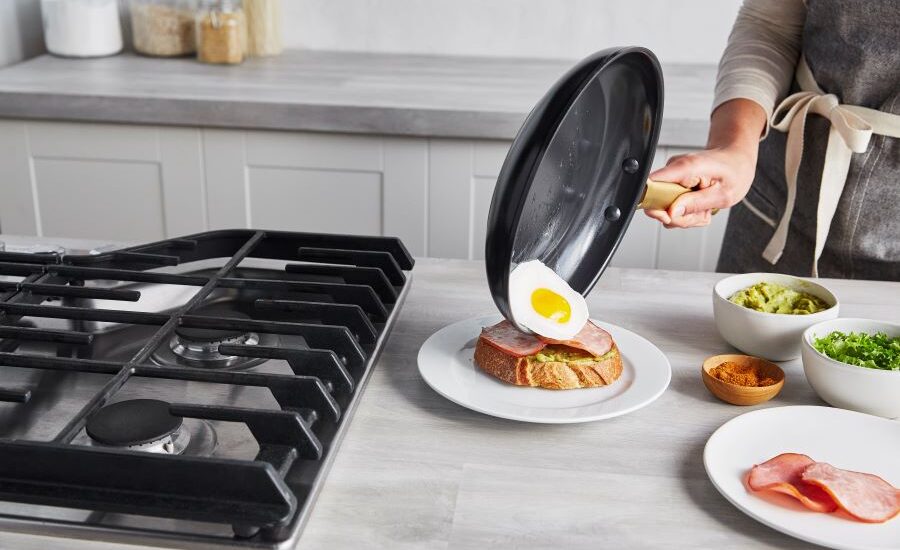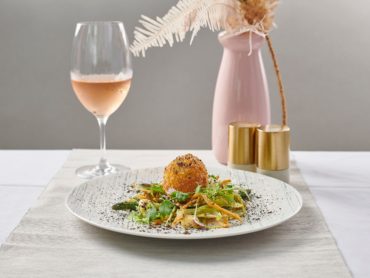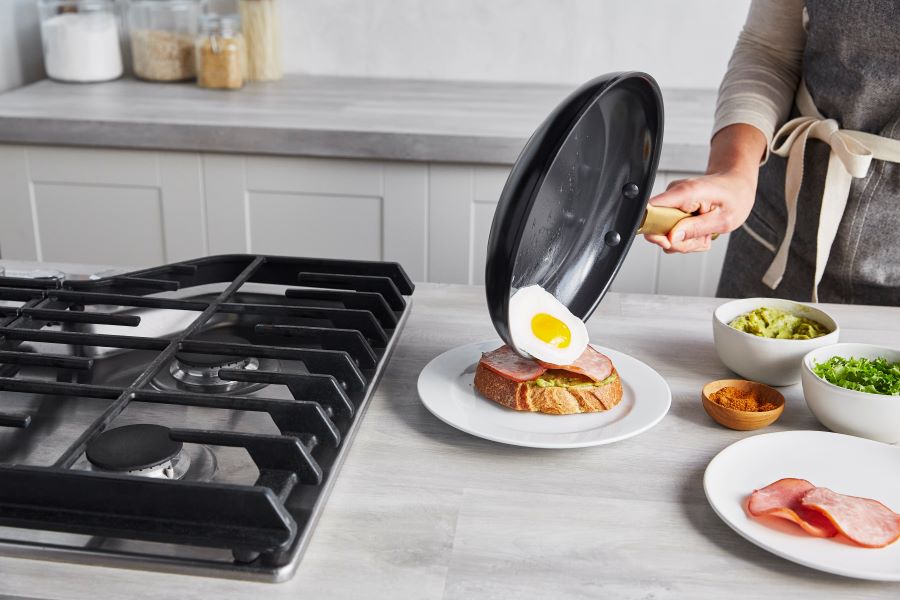
It seems we can’t watch TV or be online without another story on the worsening state of our climate. Sometimes it can feel overwhelming, what can we do in the face of such enormity?
Whilst there are calls for the eradication of our gas hobs, a smaller thing to change is our pans. Did you know that non-stick coatings were first created in the 1950’s? The chemicals used to turn pans into nonstick coatings are known as “forever chemicals,” and these microplastics have been found in 99% of Americans. PFAS (per- and polyfluoroalkyl substances) are man-made chemical compounds used in everything from waterproof jackets to cosmetics. They have polluted drinking water, our homes, and are found in our bodies. And microplastics have become so prevalent they’ve been found in unborn babies. Eeek.
When we overheat traditional non-stick pans (and many types of cookware) there is a greater risk that chemicals are released into the atmosphere, into our food and absorbed by our bodies. So make it your new resolution to ‘bin the pan’ if you see it’s coating breaking down.
GreenPan first launched in 2007 developing a unique coating based on ceramic called Thermolon™ . Over the years the tech has advanced to create an award winning range loved by cooks the world over. Instead of plastic, the coating starts with main raw materials that were originally derived from sand. The solution is sprayed onto the walls of the pan so no glue or additives needed, instead it is placed in an oven for the layer to harden. Meaning the production produces 60% less CO2 than producers of traditional non-stick PTFE pans do! The result is an ultra-strong Thermolon ceramic non-stick coating. Ter darh!
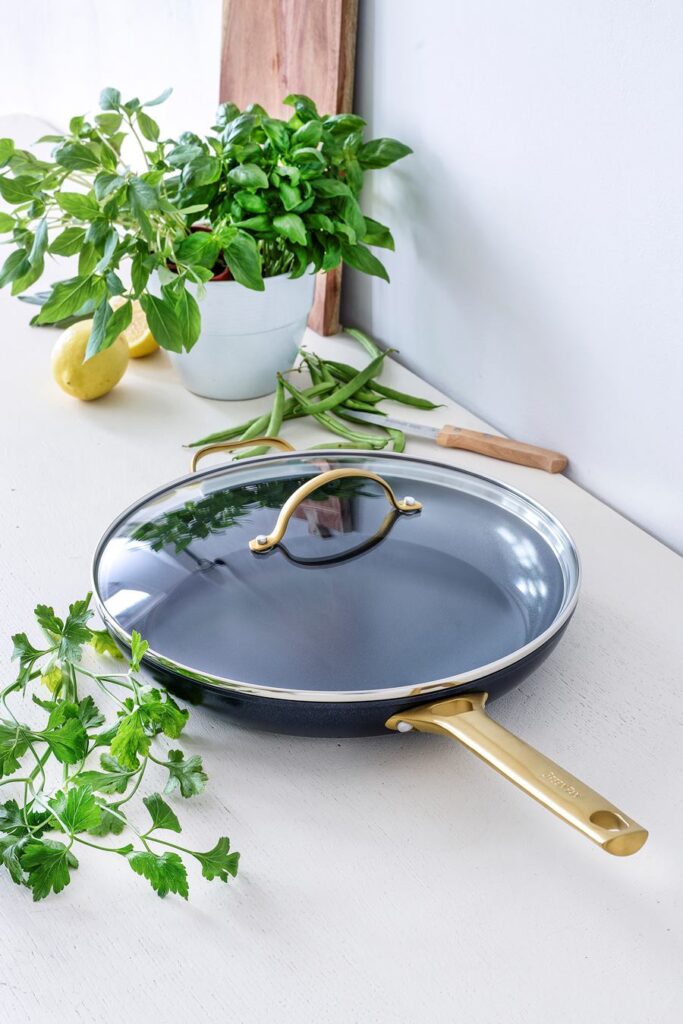
Our pan arrived within a few days. It was wrapped with a sustainable cardboard cover. This fry pan is 20cm of glamour, which together with its lid looked so beautiful we wanted to show it off permanently rather than hide it away in a cupboard.
Our first test is perhaps one of the most regular uses of a a fry pan and a test of non stickiness.. an omelette! One of the things I first notice is that it heats up fast. In fact they recommend a medium heat due to its conductive properties. A little bit of oil, then I add chopped up tomato (surely that’s going to stick?), spinach and some mushrooms. They sizzle beautifully, eggs are in and there are no hot spots. This is like cooking a three egg omelette with Apollo 14 moon landing precision. A flip and it slides beautifully onto the plate. There are few joys in life more amazing than this beauty makes my cooking look like its come from a hatted restaurant.
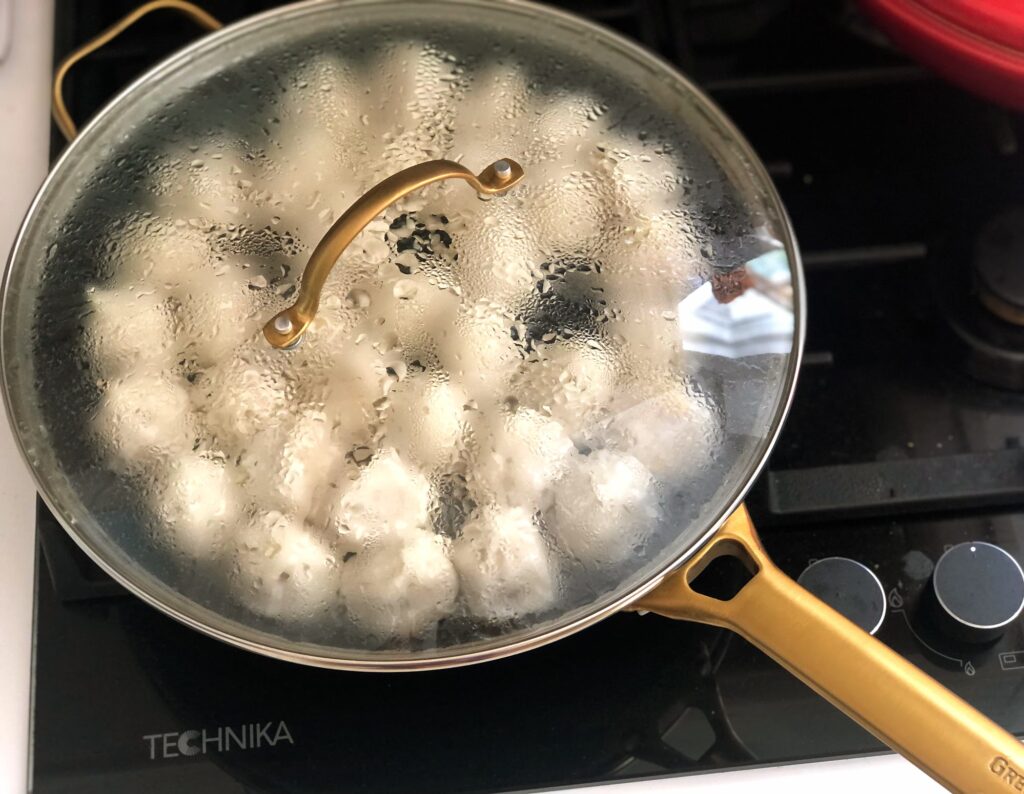
steam, steam away 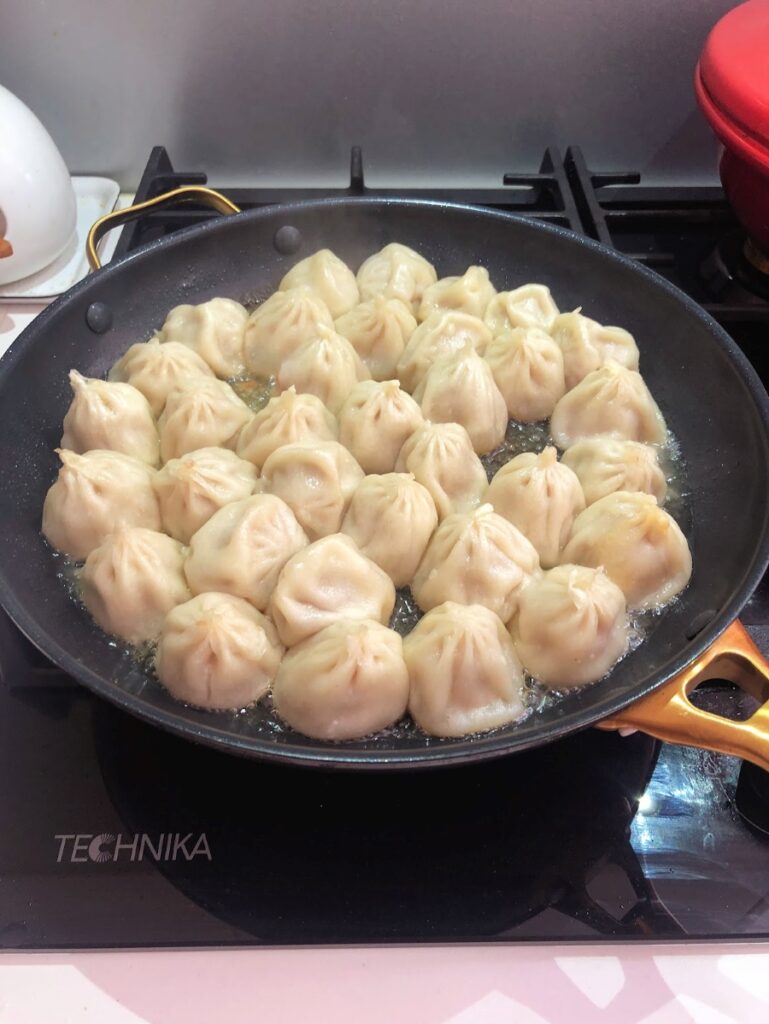
Final fry to get those cripsy brown bottoms
Next up are pan fried soup dumplings. Now, I like the baby ones, which have very thin skin. They normally stick to my old frying pan so I end up with torn dumplings and lose all the soup (doh!). A quick sizzle to seal the bottoms, then in with the water and on with the lid. The final fry then just gives them an extra crunch. WOAH!! not a single sticky one left in the pan. This is my new best friend.
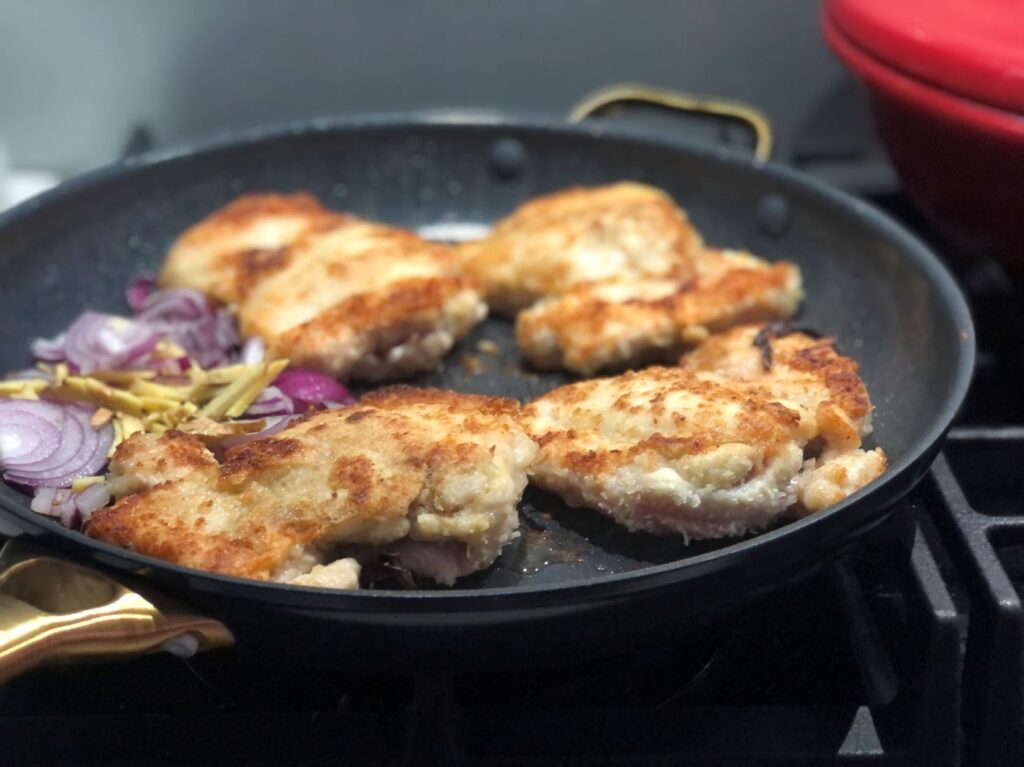
crispy chicken 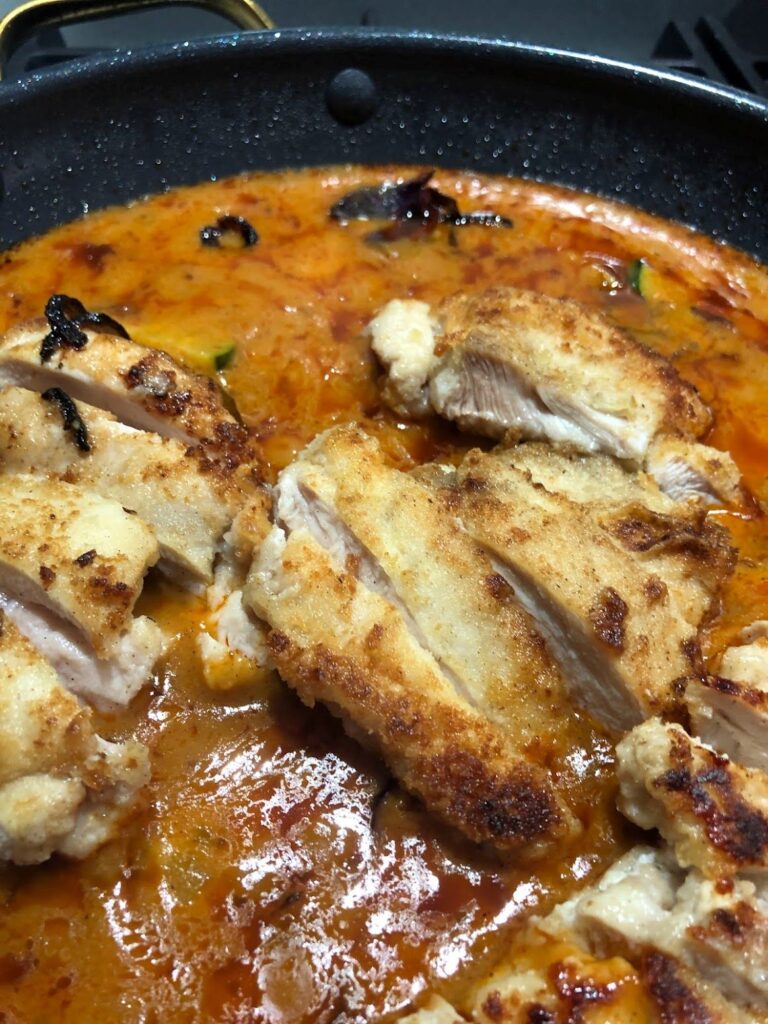
Hello butter chicken
So what about a slow cook? Too easy, chicken thighs need very little oil and crisp up quickly, after slow cooking the onions, tomatoes, spices and cream the curry comes together after time under the lid as the oils bubble to the surface the way all good Indian butter curries should!
OK. I am officially converted. My GreenPan is the bees knees. When you add up all its sustainability and health credentials, combined with savings in food which gets thrown out as it’s stuck to the pan it’s a savvy investment in your body and our planet.
GreenPan – https://greenpan.com.au/
